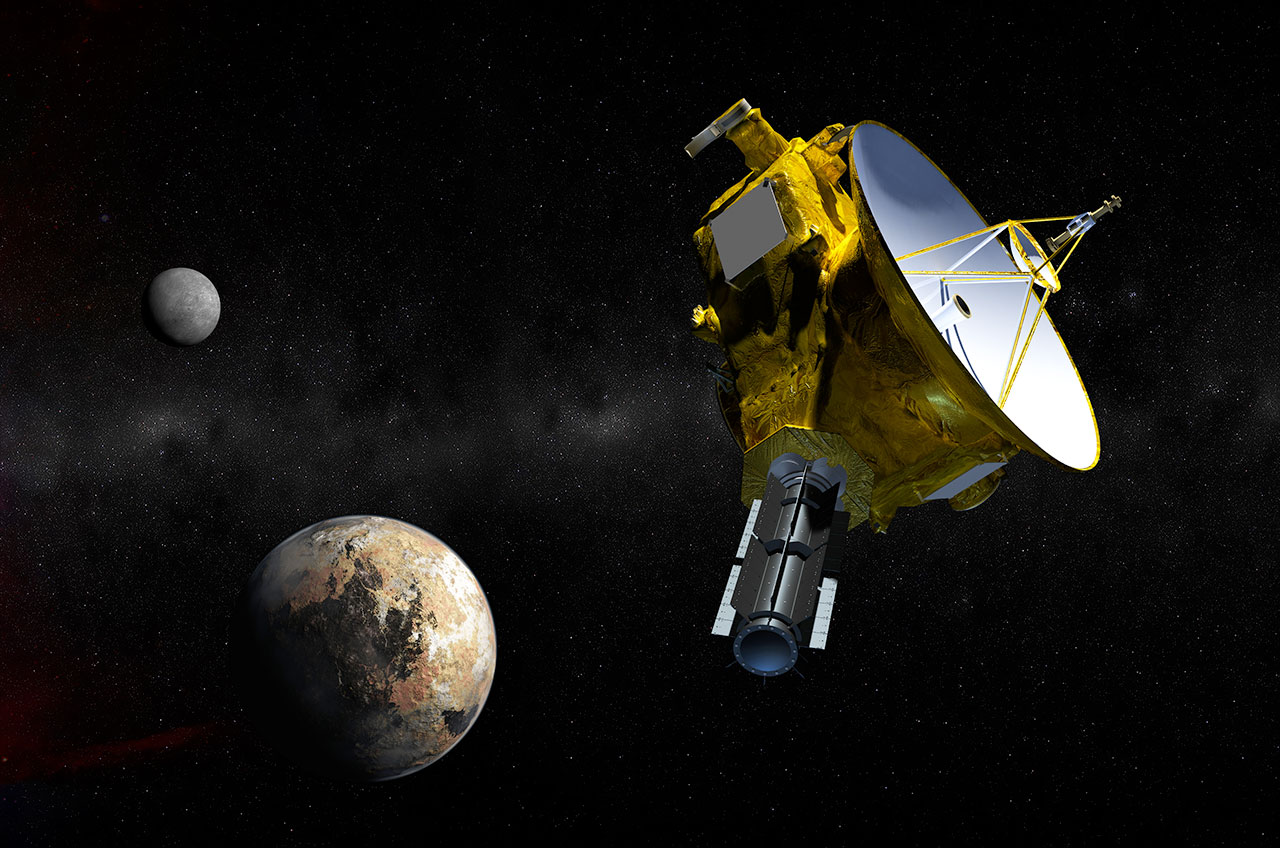How Far Away is Pluto?

Long before it was demoted to the status of a dwarf planet, Pluto stood out in many regards. Regarded as the most distant planet for over 75 years, its orbit is extremely tilted in regards to the other planets, and sometimes brings it closer to the sun than Neptune.
How far is Pluto from Earth?
The planets in the solar system travel in elliptical orbits rather than perfect circles, and so the distances between them are constantly changing. At its most distant, when the two bodies are on the opposite sides of the sun from one another, Pluto lies 4.67 billion miles (7.5 billion kilometers) from Earth. At their closest, the two are only 2.66 billion miles (4.28 billion km) apart.
How far is Pluto from the sun?
After the sun formed, the remaining dust and gas evolved into the planets that make up our solar system. This means that most of them orbit on a nearly flat plane in relation to one another. But after its formation, Pluto wound up out of sync, its orbit tipped to an angle of about 17 degrees in relation to this plane.
The dwarf planet's orbit is also highly elliptical, making it a very stretched-out circle. This allows the Pluto to dip inside of the orbit of Neptune for 20 of the 248 years it takes the dwarf planet to orbit the sun. Pluto last entered Neptune's orbit on Feb. 7, 1979, where it remained until Feb. 11, 1999. Its highly elliptical orbit means that the atmosphere of the dwarf planet changes over time, expanding and contracting as its components freeze and melt.
Because the distance to Pluto is so great, it lies inside the Kuiper Belt, a group of rocks and ices left over from the formation of the solar system. With its icy crust and rocky core, Pluto is the largest known object in the belt. Far from the sun, bodies in the Kuiper Belt suffer freezing temperatures.
While most planets swept the area around them clean of smaller bodies soon after their formation, Pluto lacked the mass and gravitational force necessary to do so. This is one of the reasons it was demoted to the status of a dwarf planet in 2006. Despite its demotion, Pluto continues to have some fame in the solar system. Dwarf planets found in its neighborhood are referred to as plutoids.
How long does it take to reach Pluto?
When scientists send probes to planets and other bodies, the spacecraft rarely travel in straight lines. Visiting the more distant parts of our solar system, the satellites often use the gravity of moons, planets, and even the sun to provide them with fuel-less acceleration. The constant motion of the solar system means that the bodies aren't always in the most ideal position at the time of launch — and with bodies such as Pluto, waiting for the ideal lineup could mean a delay of decades or even centuries. As such, it sometimes takes longer to travel to a distant body with faster rockets than it may have decades ago, simply because one journey may utilize a straighter line.
The most distant-traveling spacecraft in the solar system, the Voyager and Pioneer missions, never made it to the tiny body. Thus, NASA's New Horizons mission is the only spacecraft that has visited Pluto. Launched on Jan. 19, 2006, the craft arrived at the Pluto-Charon system on July 14, 2015, more than 9 years after leaving Earth. New Horizons passed by Mars, and used Jupiter for a gravity assist on its way to Pluto. When it passed within 7,800 miles (12,500 kilometers) of Pluto's surface, it was traveling at a relative velocity of 30,800 mph (49,600 kph).
The discovery of Pluto
Because Pluto lies so far away, and is so tiny, it wasn't discovered until 1930. However, a number of sky surveys unknowingly captured images of the dwarf planet; they simply failed to identify them.
After the discovery of Neptune, many astronomers thought that the orbit of Uranus was affected by another planet, termed "Planet X." Clyde Tombaugh was hired at the Lowell Observatory in Flagstaff, Arizona, to search for the mysterious planet by searching photographs of the night sky for changes. On Feb. 18, 1930, Tombaugh identified an object that could fill the role as the missing planet. Subsequent photographs confirmed the moving body.
The name for the newly discovered body was selected by an 11-year old girl, Venetia Burney of Oxford, England. Pluto, the Roman god of the underworld, seemed a fitting name for the icy distant planet. The suggestion was sent to Lowell Observatory, along with more than a thousand other proposals from around the world, and was unanimously selected by the observatory staff on March 24, 1930.
Follow Nola Taylor Redd on Twitter @NolaTRedd or Google+. Follow us at @Spacedotcom, Facebook or Google+. Originally published on Space.com.
Join our Space Forums to keep talking space on the latest missions, night sky and more! And if you have a news tip, correction or comment, let us know at: community@space.com.
Breaking space news, the latest updates on rocket launches, skywatching events and more!

Nola Taylor Tillman is a contributing writer for Space.com. She loves all things space and astronomy-related, and always wants to learn more. She has a Bachelor's degree in English and Astrophysics from Agnes Scott College and served as an intern at Sky & Telescope magazine. She loves to speak to groups on astronomy-related subjects. She lives with her husband in Atlanta, Georgia. Follow her on Bluesky at @astrowriter.social.bluesky
